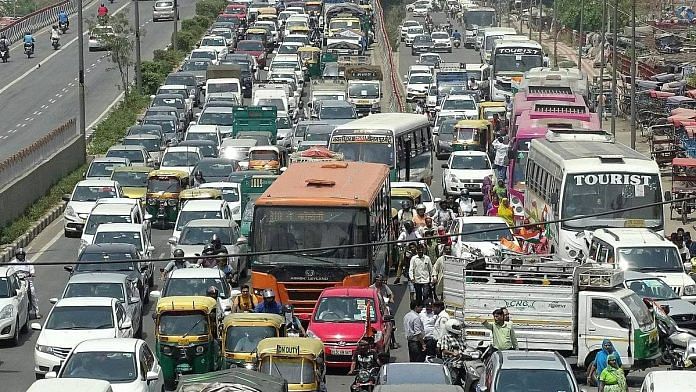New Delhi: A record 39.69 lakh units of passenger vehicles were dispatched from manufacturers to dealers — referred to in the industry as “wholesales” — in 2022-23. This marks the highest-ever annual wholesales for the segment, supported by strong demand for utility vehicles and easing of supply chain issues, according to the Society of Indian Automobile Manufacturers (SIAM).
The industry body said it “sees no reason why” the entry-level car segment — which has shrunk significantly over the past few years due to rising prices — will not see a “sudden” revival in demand.
Speaking to reporters Thursday, SIAM president Vinod Aggarwal said the passenger vehicle segment — which includes car, utility vehicles and vans — posted the highest-ever domestic wholesales, surpassing the previous peak in 2018-19 (33.77 lakh units).
In 2021-22, the wholesales of passenger vehicles stood at about 30.69 vehicles.
Replying to a query on rising prices of cars impacting demand in the entry-level segment, Aggarwal said, “We may see a sudden demand (in this segment) in the time to come because at the end of the day there are still consumers who will need entry-level cars… right now it is slow because of x y z reason, but no reason why they should not come back.”
He also added that all cars in the utility vehicle segment are not highly priced, some are available at a reasonable price. “So, there is some attraction at that price and hence you see the movement happening in this segment.”
He said, “If you look at overall (sales) numbers, they are going up, so it means the buying is happening. If they are shifting from x level of price to x plus, it is a good sign. It is a sign that people are more prosperous… that’s why more vehicles are selling. Why are we interpreting it in a negative manner?”
Shashank Srivastava, senior executive director (marketing and sales) at the country’s largest carmaker Maruti Suzuki, told ThePrint the price of entry-level hatchbacks has increased by about 28 per cent in the past five years (2018-19), and 20 per cent in the past three years (2020-2021). This has led to a drop in sales from a record level of 15.5 lakh units in 2017-18, to 13.4 lakh units in 2022-23, he said.
Factors such as increase in commodity prices, regulatory stringency, high taxes, and feature addition have led to the rise in prices, he added. “These factors affect all segments but price elasticity for this segment is the highest and hence the decline in demand was the highest,” he said.
‘A proper perspective’
Aggarwal said things need to be put “in a proper perspective”.
“First of all, the regulatory norms are required. At the same time, we have to see how we create more advantages for the consumers through various means… the industry performance has recovered quite well last year in spite of all the regulatory concerns. Sales of passenger vehicles are at a new peak,” he added. “Commercial vehicles are also only lower by about 5 per cent than the previous peak. Two-wheeler sales are still a low 25 per cent as entry-level sales have been impacted.”
According to Aggarwal, while “regulatory changes or insurance etc… have added to the initial investment of consumers going up, and there may be a link with demand, but overall emission standards are required”.
“We can’t say as an industry that the government should not implement the environment-related standards. Other safety-related features which are being put on the vehicles, they are required. I think we have to put it in perspective. Overall economy is doing well and I am sure these are the things which settle down over a period of time,” he added.
For the full year, sales of passenger cars stood at 17,47,376 (up from 14,67,039 units in the previous financial year), utility vehicles at 20,03,718 units (up from 14,89,219 units), and vans at 1,39,020 units (up from 1,13,265 units).
According to data released by SIAM, two-wheeler wholesales grew to 1,58,62,087 units in FY 2022-23 as against 1,35,70,008 units in 2021-22. Domestic sales of two-wheelers, it pointed out, are still below the sales level in 2014-15.
Sales of commercial vehicles stood at 9,62,468 units during the year, up from 7,16,566 units in the year-ago period. Commercial vehicles posted the second-highest domestic sales and is close to the previous peak of 2018-19, Aggarwal said.
Total vehicle wholesales across categories were higher at 2,12,04,162 units in 2022-23, as against 1,76,17,606 units in the previous financial year.
(Edited by Geethalakshmi Ramanathan)
Also Read: India’s auto component industry is clocking billions but road to Atmanirbhar is still bumpy



